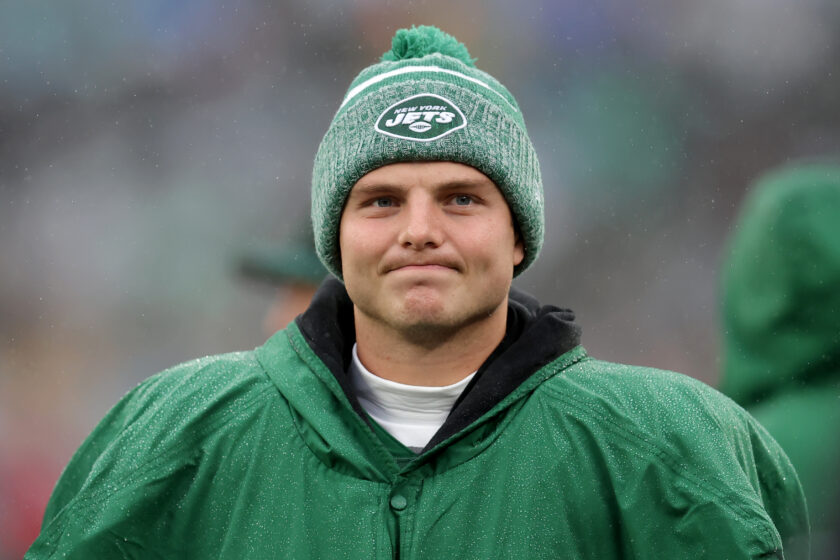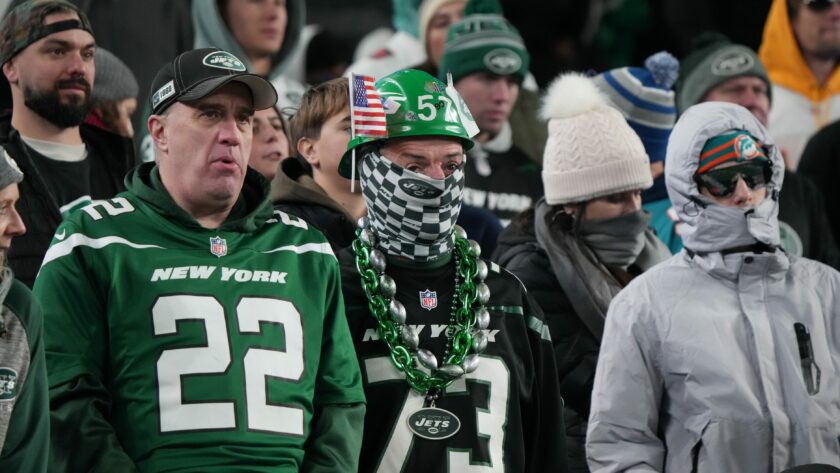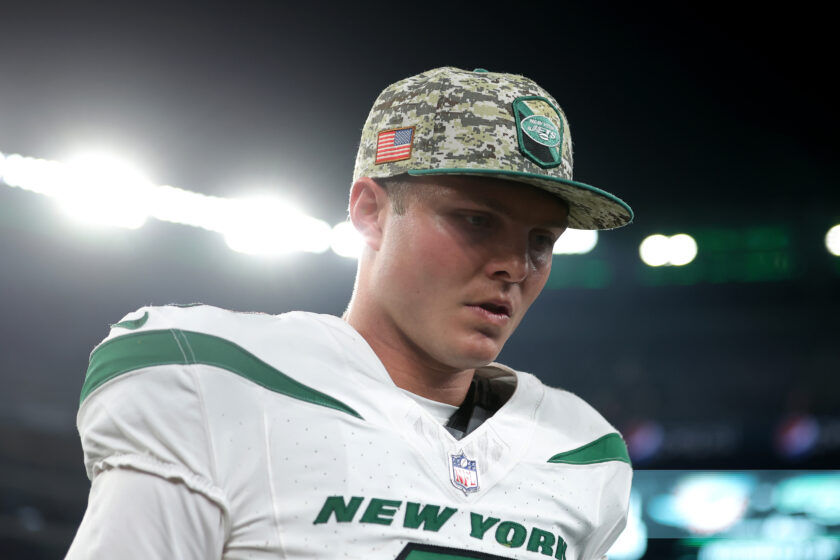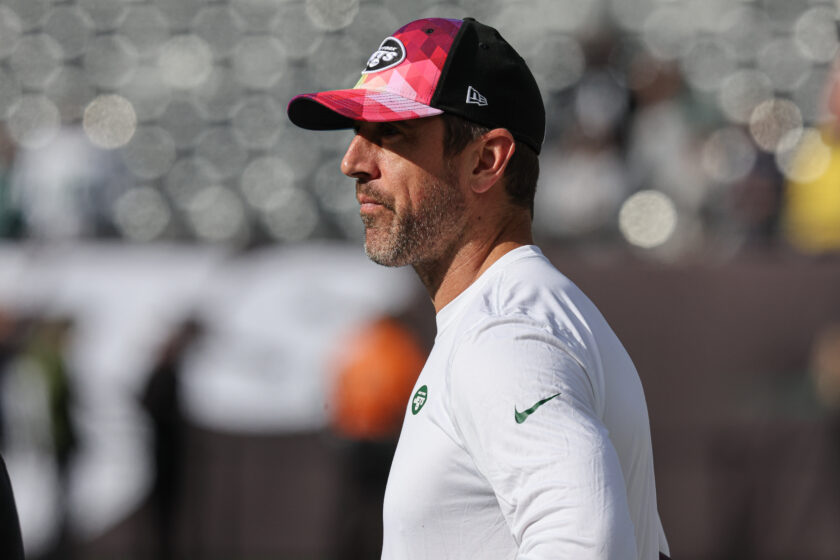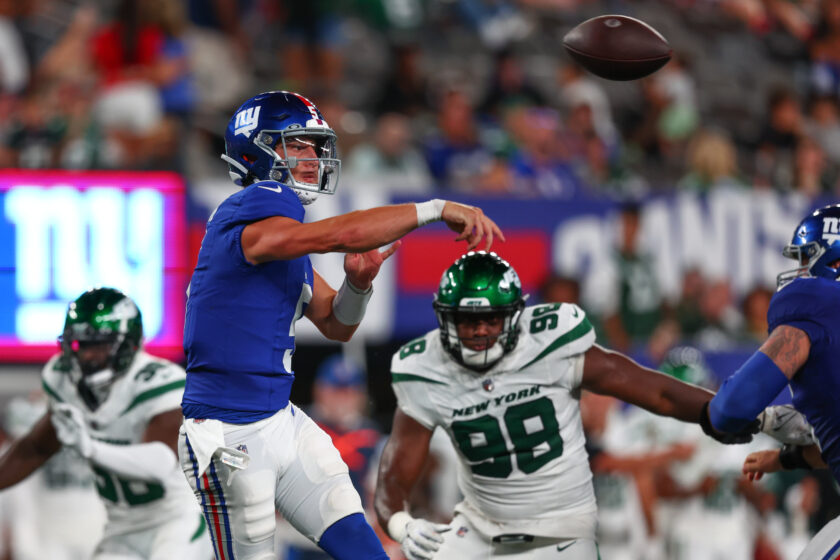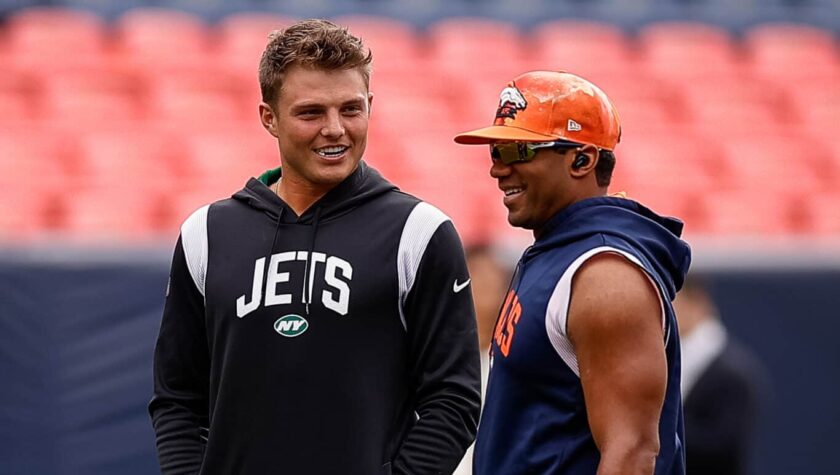New York Jets Sub Defense Has A Chance To Be Special In 2016
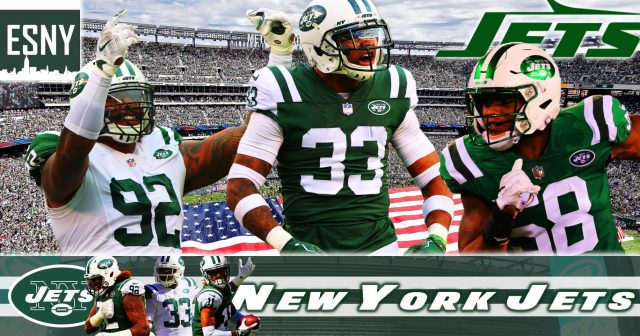
With the additions of Darron Lee and others, the New York Jets are positioned to have one nasty sub-package defense in 2016.
By Robby Sabo
 Two running backs, two wide receivers, and one tight end – this is what the most traditional football fan refers to as base personnel.
Two running backs, two wide receivers, and one tight end – this is what the most traditional football fan refers to as base personnel.
You know this look. It’s the look almost all NFL broadcasts use by way of starting offense graphics prior to first snap. It’s the look you fill out your starters in the latest version of Madden.
Actually, come to think of it, this is the way it used to be.
No longer is the 21 offense (two running backs and one tight end) the standard. It was back in the day, when the Run n Shoot made its mark in the early 1990s. No longer.
Rather, one-back sets rule the gridiron these days. Though the positions of wide-out and tight end are becoming more interchangeable by the moment, the fullback has given way to the extra weapon on the outside in the National Football League.
According to Pro Football Focus, there were 34,661 total snaps in 2013. For 15,697 of those plays, defenses used their nickel personnel (five defensive backs with six in the box). On 4,034 of those snaps, a dime was used (six defensive backs with five in the box).
This means at least 57 percent of the snaps (not including seven DB looks) featured a some sort of sub-package personnel.
This number reflects what we saw in 2013. Today, two seasons later, many believe the number is now over 65 percent.
This means we now witness staggering amounts of three wide receiver sets. So much so, that the base personnel grouping in the NFL is up for grabs.
In conjunction, this means defenses needed to adjust. Thanks to these adjustments, the linebacker position is changing rapidly.
No team understands this more than the New York Jets.
For years on end they’ve witnessed Tom Brady torch the likes of David Harris and Demario Davis out of the backfield. Whether it was Rob Gronkowski, Aaron Hernandez (yes, him), Kevin Faulk, or Shane Vereen, Brady routinely glared at the back of the No. 52 and No. 56 jersey more than the front.
Enter Darron Lee, the man Mike Maccagnan tabbed as the 20th overall pick in the 2016 NFL Draft. Lee, 21, the 6-2, 232 lbs. lightning fast backer, was brought in with the direct purpose to fly around and help the pass defense on the second level.
What he sometimes lacks by way of big-boy run stuffing, he makes up for in spades in the hook-to-curl area.
This fits the new-age NFL to a tee.
Upon drafting the Ohio State product, Maccagnan and Todd Bowles tabbed Lee as a 3-4 inside linebacker. A guy who will immediately backup Erin Henderson in their “MO” slot.
Maccagnan calls Lee an inside linebacker. #nyj
— Brian Costello (@BrianCoz) April 29, 2016
They also made mention that he’d immediately be in the mix as the top middle backer in sub-packages.
Mike Maccagnan said he likes Darron Lee's speed and athleticism. #Jets
— Darryl Slater (@DarrylSlater) April 29, 2016
https://twitter.com/Cnimbley/status/725877194887729152?ref_src=twsrc%5Etfw
Todd Bowles on @DLeeMG8: "He makes us a lot faster." #jets
— Kimberley A. Martin (@ByKimberleyA) April 29, 2016
I’ll take it a step further. Lee will be the guy for the Jets in sub-packages.
No longer will we see Harris on the field in pass-only situations. In some three receiver sets when the run is possible, Harris’s presence will still be needed. But in all-out, pin your ears back passing situations, Lee is already No. 1 on the depth chart at ILB.
First of all, let’s debunk the myth about Lee’s size. Luke Kuechly, who’s widely considered the best overall ILB in the game today, is 6-3, 238 lbs. Even if Lee listed 232 lbs. is stretching the truth a bit (which it probably is), his size isn’t too far off from Kuechly’s stature.
Many believe the Jets will eventually shift more to a 4-3 look in base situations, especially thanks to Muhammad Wilkerson sticking around. If that’s the case, Lee will fit the WILL spot in the 4-3 much nicer.
Whether it’s 4-3 or 3-4 when seven are needed in the box, the sub-package is where the Jets will really excel.
Current Jets Sub-Package Depth Chart:
LDE: Muhammad Wilkerson, Jordan Jenkins
LDT: Leonard Williams, Muhammad Wilkerson, Jarvis Jenkins
RDT: Sheldon Williams, Muhammad Wilkerson, Jarvis Jenkins
R-EDGE: Lorenzo Mauldin, Jordan Jenkins
No. 1 LB: Darron Lee
No. 2 LB: David Harris, Bruce Carter
No. 1 CB: Darrelle Revis
No. 2 CB: Marcus Williams, Dee Milliner, Juston Burris
No. 3 CB: Buster Skrine, Dexter McDougle
–No. 4 CB: Dee Milliner, Dexter McDougle, Juston Burris
FS: Marcus Gilchrist
SS: Calvin Pryor
–BOX S: Dion Bailey
The first asset of this group that comes screaming to mind is speed.
One the top struggles this defense faced in 2015 was sideline-to-sideline speed. Harris can sure thump with the best of them, but when it came to running with backs on stretch plays or wheel routes, he was usually at the mercy of many variables.
With Lee assuming the top LB spot in sub-packages, team speed increases tenfold.
His skillset is perfect for that of a running, maneuverable second-level player. In essence, if all works according to plan, Bowles just added a third safety in a robber position who can tackle like a linebacker.
Bruce Carter is another guy who adds to team speed. Though he’s struggled to find consistency in his first five seasons in the league (DAL, TB), his 4.57 40-yard at the combine adds even more juice to the Jets newly-formed second level. He and Harris will each have roles as the second LB.
There’s not much to complain about in the secondary. Darrelle Revis, while not the All-Pro he used to be, is still a top-flight corner. Opposite him will be the question. Buster Skrine is still better suited as the nickelback, but that’s all dependent on Marcus Williams or rookie Juston Burris establishing themselves in training camp.
In essence, if all works according to plan, Bowles just added a third safety in a robber position who can tackle like a linebacker (Lee).
As long as Calvin Pryor is on the field, he and Marcus Gilchrist make up one of the more underrated safety duos in the league.
Think about having Lee and Pryor underneath with Gilchrist over-the-top. Or, Lee underneath with Pyror and Gilchrist over-the-top in 2-man looks. Any way you look at it, the combination of those three on the inside would get any defensive mind downright giddy.
What would really make this sub-package an absolute nightmare for offensive coordinators, however, would be having consistent heat coming off the edge.
Muhammad Wilkerson, once again, will be playing out of position on passing downs. He’s much better served as an interior pass rusher. Nevertheless, he’ll have to play along the edge in order to get both Leonard Williams and Sheldon Richardson in the mix up the middle – which is one hell of a combination for guards and centers to deal with.
What happens along the other edge, the more pure edge (as it pertains to speed rushing), is what’ll be the difference between this unit being really solid or really special in 2016.
If Lorenzo Mauldin and/or Jordan Jenkins can provide a presence in 2016, this Jets sub-package will be filthy. If both of them can emerge, it can allow Wilkerson to move inside on more of a consistent basis, providing a rotation among the three beasts.
Last season the Jets finished fourth in overall defense (5,098 yards allowed). They were tied for eighth in points allowed (19.8 per game). They finished 13th in pass yards against (235.2 per game).
They did this with a slower-than-average defense.
It was obvious: When it came to defending the pass, the interior of the defense (after the line of scrimmage) was the soft-spot.
Throw in the likes of Lee, Carter, Jenkins, with Harris coming off the field when speed ramps up, and this Jets sub-defense has a chance to be special.
How special? Well, only four months remain before we actually find out.

NEXT: The New York Jets And Ryan Fitzpatrick Are Conducting Big Boy Business; It’s Nothing Personal
Robby Sabo is a co-founder, CEO and credentialed New York Jets content creator for Jets X-Factor - Jet X, which includes Sabo's Sessions (in-depth film breakdowns) and Sabo with the Jets. Host: Underdog Jets Podcast with Wayne Chrebet and Sabo Radio. Member: Pro Football Writers of America. Coach: Port Jervis (NY) High School. Washed up strong safety and 400M runner. SEO: XL Media. Founder: Elite Sports NY - ESNY (Sold in 2020). SEO: XL Media.
Email: robby.sabo[at]jetsxfactor.com


